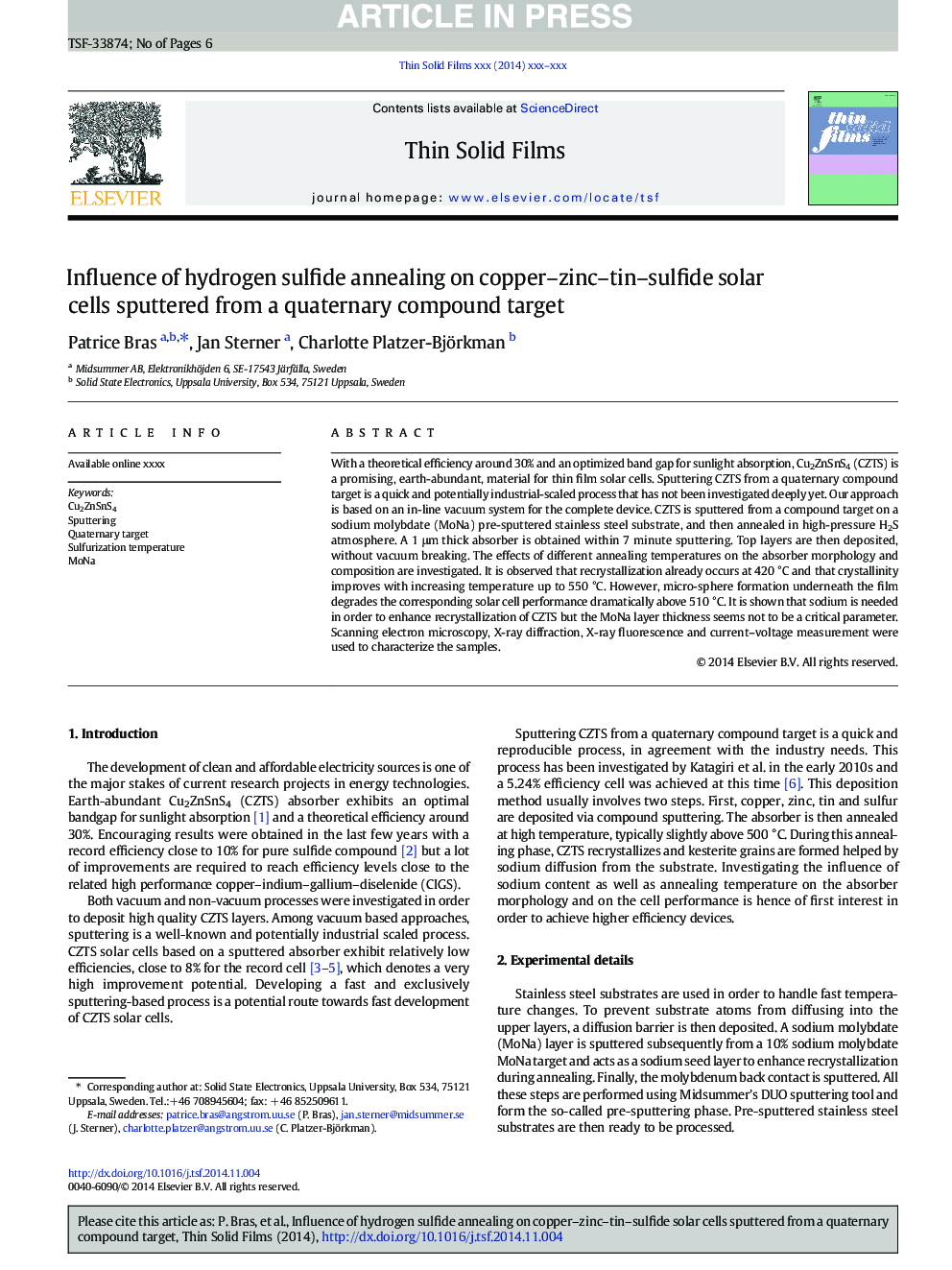| کد مقاله | کد نشریه | سال انتشار | مقاله انگلیسی | نسخه تمام متن |
|---|---|---|---|---|
| 8034394 | 1518023 | 2015 | 6 صفحه PDF | دانلود رایگان |
عنوان انگلیسی مقاله ISI
Influence of hydrogen sulfide annealing on copper-zinc-tin-sulfide solar cells sputtered from a quaternary compound target
ترجمه فارسی عنوان
تأثیر هیدروژن سولفید بر روی سلولهای خورشیدی مس-روی-قلع-سولفید از یک هدف مرکب کواترنری
دانلود مقاله + سفارش ترجمه
دانلود مقاله ISI انگلیسی
رایگان برای ایرانیان
کلمات کلیدی
موضوعات مرتبط
مهندسی و علوم پایه
مهندسی مواد
فناوری نانو (نانو تکنولوژی)
چکیده انگلیسی
With a theoretical efficiency around 30% and an optimized band gap for sunlight absorption, Cu2ZnSnS4 (CZTS) is a promising, earth-abundant, material for thin film solar cells. Sputtering CZTS from a quaternary compound target is a quick and potentially industrial-scaled process that has not been investigated deeply yet. Our approach is based on an in-line vacuum system for the complete device. CZTS is sputtered from a compound target on a sodium molybdate (MoNa) pre-sputtered stainless steel substrate, and then annealed in high-pressure H2S atmosphere. A 1 μm thick absorber is obtained within 7 minute sputtering. Top layers are then deposited, without vacuum breaking. The effects of different annealing temperatures on the absorber morphology and composition are investigated. It is observed that recrystallization already occurs at 420 °C and that crystallinity improves with increasing temperature up to 550 °C. However, micro-sphere formation underneath the film degrades the corresponding solar cell performance dramatically above 510 °C. It is shown that sodium is needed in order to enhance recrystallization of CZTS but the MoNa layer thickness seems not to be a critical parameter. Scanning electron microscopy, X-ray diffraction, X-ray fluorescence and current-voltage measurement were used to characterize the samples.
ناشر
Database: Elsevier - ScienceDirect (ساینس دایرکت)
Journal: Thin Solid Films - Volume 582, 1 May 2015, Pages 233-238
Journal: Thin Solid Films - Volume 582, 1 May 2015, Pages 233-238
نویسندگان
Patrice Bras, Jan Sterner, Charlotte Platzer-Björkman,
